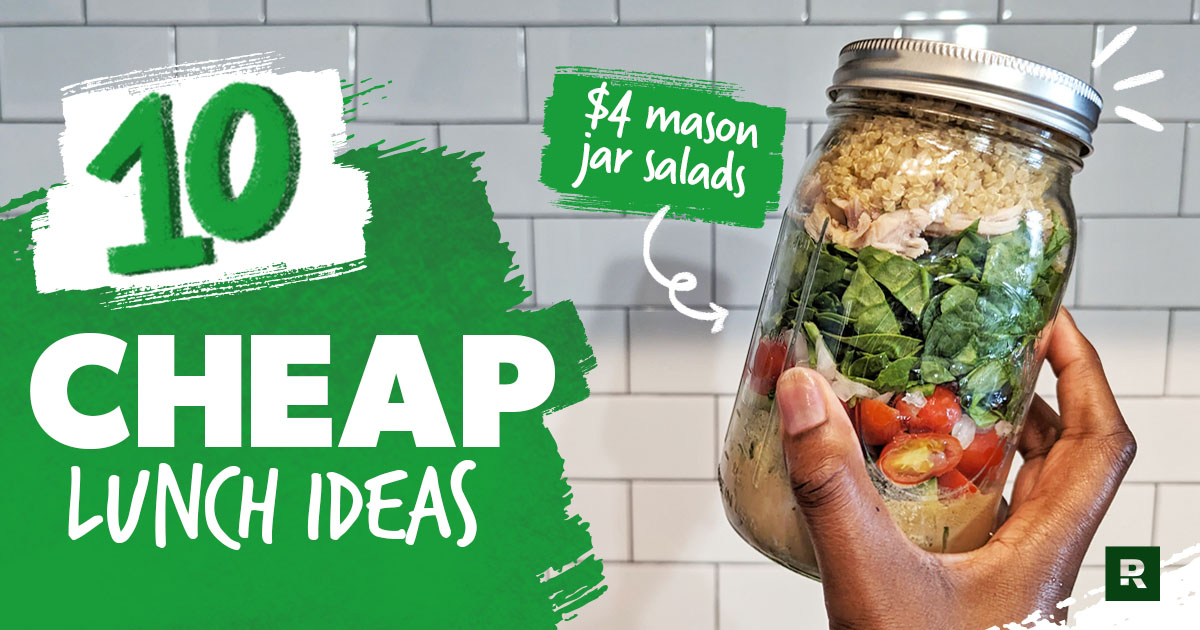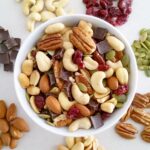Tired of expensive lunch options that leave your wallet feeling as empty as your stomach? Imagine vibrant, flavorful, and satisfying egg-free lunches that don’t sacrifice taste or your budget. This guide dives into a treasure trove of delicious recipes, designed to be both wallet-friendly and quick to prepare. From budget-conscious meal planning to creative ingredient substitutions, we’ll equip you with the knowledge and recipes to conquer your lunchtime cravings without emptying your bank account. Prepare to discover a world of culinary possibilities, where healthy eating and financial prudence go hand in hand.
We’ll explore a diverse range of egg-free lunch options, catering to various dietary needs and preferences. Learn how to create quick and easy lunches perfect for busy weekdays, discover delicious vegetarian and gluten-free alternatives, and master the art of customizing recipes to suit your individual taste. We’ll even provide a complete weekly menu plan, complete with a detailed shopping list, to streamline your lunch preparation process. Get ready to embark on a delicious and affordable egg-free lunch adventure!
Egg-Free Lunch Recipe Variations & Customization

Egg-free lunches offer a delicious and versatile alternative for those with egg allergies or dietary preferences. This section explores five base egg-free lunch recipes and their customizable variations, highlighting the impact on taste, texture, and nutritional value. By simply swapping ingredients or adjusting cooking methods, you can create a wide array of exciting and affordable meals.
Base Egg-Free Lunch Recipes and Variations
The following table presents five foundational egg-free lunch recipes along with three variations for each, demonstrating the ease of customization and the resulting changes in the final product. These variations offer opportunities to experiment with different flavors, textures, and nutritional profiles, ensuring your egg-free lunches remain exciting and satisfying.
| Recipe Name | Variation 1 | Variation 2 | Variation 3 |
|---|---|---|---|
| Avocado Toast with Everything Bagel Seasoning | Avocado Toast with Smoked Salmon and Dill | Avocado Toast with Hummus and Roasted Red Peppers | Spicy Avocado Toast with Jalapeños and Lime |
| Chickpea Salad Sandwich on Whole Wheat Bread | Curried Chickpea Salad Sandwich on Pita Bread | Mediterranean Chickpea Salad Sandwich with Feta and Olives | Spicy Chickpea Salad Sandwich with Sriracha Mayo |
| Lentil Soup with Whole Grain Crackers | Lentil Soup with Sausage and Spinach | Creamy Tomato Lentil Soup with Coconut Milk | Spicy Lentil Soup with Chipotle Peppers |
| Quinoa Salad with Black Beans, Corn, and Avocado | Quinoa Salad with Roasted Sweet Potatoes and Pepitas | Quinoa Salad with Grilled Chicken and Mango Salsa | Mediterranean Quinoa Salad with Cucumber, Tomatoes, and Feta |
| Leftover Vegetable Stir-fry with Brown Rice | Vegetable Stir-fry with Tofu and Peanut Sauce | Vegetable Stir-fry with Shrimp and Ginger | Vegetable Stir-fry with Cashews and Sesame Seeds |
Impact of Variations on Taste, Texture, and Nutritional Value
The variations presented above significantly influence the sensory experience and nutritional profile of each base recipe. For instance, adding smoked salmon to avocado toast enhances the savory flavor and adds a creamy texture, increasing protein content. Using hummus instead creates a more earthy and slightly bitter taste, while maintaining a creamy texture, and boosting fiber intake. Incorporating jalapeños introduces a spicy kick and vibrant color.
Similarly, variations in the chickpea salad sandwich offer a spectrum of flavor profiles. A curried chickpea salad introduces warm spices and a slightly thicker texture, while the Mediterranean version brings a salty tang and fresh crunch. The Sriracha mayo variation adds a fiery kick and a creamy richness. These changes also affect the nutritional content, with the addition of feta cheese increasing calcium and fat, while sriracha mayo adds a higher calorie count.
The lentil soup variations demonstrate the versatility of this hearty meal. Adding sausage introduces a richer, more savory flavor and increases protein, while coconut milk creates a creamier, smoother texture and adds healthy fats. Chipotle peppers add a smoky heat and a deeper flavor complexity. These changes impact the nutritional content, with sausage adding more saturated fat and coconut milk adding more calories. The quinoa and vegetable stir-fry variations similarly illustrate how ingredient swaps dramatically change the taste and nutritional value of the dishes, impacting the overall flavor profile and macronutrient balance.
Mastering the art of budget-friendly, egg-free lunches is now within your reach! This guide has armed you with a wealth of recipes, tips, and techniques to create delicious and nutritious meals without breaking the bank. From quick weekday lunches to creative variations for diverse diets, you’re equipped to plan a week of satisfying and affordable egg-free meals. Remember, delicious and economical lunches are not a distant dream; they’re a delicious reality waiting to be explored. So, dive into your kitchen and unleash your culinary creativity!
Commonly Asked Questions
Can I freeze egg-free lunches for later?
Many egg-free lunches freeze well. Consider individual portion sizes for easy reheating. Check individual recipes for specific freezing instructions.
What are some good substitutes for eggs in baking (if a recipe requires it)?
Applesauce, mashed banana, flaxseed meal mixed with water, or silken tofu can often successfully replace eggs in baking, depending on the recipe.
How can I make my egg-free lunches more protein-rich?
Incorporate beans, lentils, tofu, nuts, seeds, Greek yogurt (if dairy is allowed), or lean meats like chicken or fish into your egg-free lunch recipes to boost protein content.


